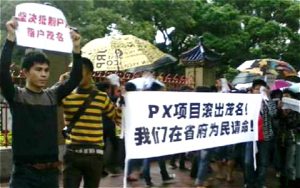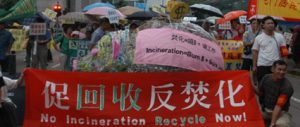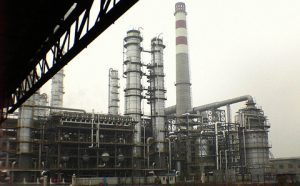I live in south London and most days I take the train past South-East London Combined Heat and Power (SELCHP), an incinerator in Deptford that generates heat and electricity by processing 420,000 tonnes of household rubbish a year. I do not regard it as a danger to my health, and I think it’s an efficient use of municipal waste that would otherwise go to methane-emitting landfills.
But many in China’s cities would not agree: huge numbers are concerned about these sorts of projects in their neighbourhoods, most recently in Hangzhou, where at least 39 people were hurt in a protest against a planned waste incinerator. Is this evidence of a deep, cultural difference between China and the UK?
I don’t think so. Communities the world over have concerns about environmental health risks of incineration and many rightly argue that policies should focus more on waste reduction and recycling. In fact, SELCHP has been controversial since it opened in 1994. In 2002, the environmental NGO Greenpeace staged a direct-action protest, drawing attention to the risk of dioxin pollution. Locals have complained about dust and questions have been asked in the London Assembly.
Still, it was not an issue in the recent local elections in my region, and it hasn’t led to any major social unrest. In fact, the amount of the UK’s household waste sent for incineration with energy recovery has more than doubled in the last 10 years (as overall amounts have fallen). So, why do most of us accept these developments?
In my opinion, it comes down to participation, transparency and trust. Thanks to a Europe-wide requirement to establish a Pollution Release and Transfer Registry (PRTR), I can log into a national database of all the potentially hazardous materials released into the air, water and soil. In a few clicks I can tell you that in 2012, SELCHP released just over 15 tonnes of ammonia into the air, but no dioxins.
It is the legal responsibility of the facility to provide this information; the data is crosschecked and has been independently assessed. If I’m still concerned about the plant, I have the legal right to read the full environmental impact assessment for the plant, which included local consultations, and if I want to know more, I can submit a freedom of information request. It’s open for visits from the public, too.
In China, transparency and public-participation rules exist but are poorly implemented. Encouragingly, a limited PRTR system was introduced in China’s Measures for the Hazardous Chemical Management and Registry, but the list of substances concerned has not yet been published. China has a law on environmental impact assessments too, but public consultation is only required at a late stage, and there is no requirement to disclose the full assessment to the public. China’s Open Government Information Regulations are well crafted but not well enforced.
Today, Chinese government officials admit that environmental problems are the greatest cause of social unrest: over the past decade, cities have been rocked by a succession of protests against large infrastructure projects, including waste incinerators. Continued secrecy around decision-making and a lack of meaningful public participation only decrease social trust, which makes such protests much more likely.
This is not to say that in Europe, the public always trusts government planning decisions, or that from a government point of view, simply following the letter of the law is enough.
The German city of Stuttgart learned this the hard way in 2009, when a railway and urban development project started construction. Like any large infrastructure development, the “Stuttgart 21” project had gone through many years of planning. No laws were broken in the development process, but neither was any great effort made to engage with the public at an early stage. So, when construction crews arrived on the site and cut down trees, residents were surprised and protests ensued – and when the police overreacted, by deploying water cannons, pepper spray and batons to clear protestors, local people were infuriated. This led to a 50,000-strong demonstration, organised through social media, and a major local electoral defeat for the party that had overseen the development.
In Stuttgart, this forced the city authorities to change strategy: to solicit public participation online, to seek opposing views on the project, to encourage an open conversation about alternative plans for the development – and ultimately to restore a modicum of public trust in the planning process around necessary infrastructural upgrades.
Could Chinese cities embrace similar strategies in their development paths? Certainly, the lesson of similar developments in Europe is that transparency and early-stage public participation around planning, waste and emissions – and avoiding repressive or censorious reactions from the security services – are crucial aspects of not only creating public trust around infrastructure and planning but also making better, more environmentally and politically sustainable decisions. With anger rising in China’s cities, a similar change of strategy could be advisable.






